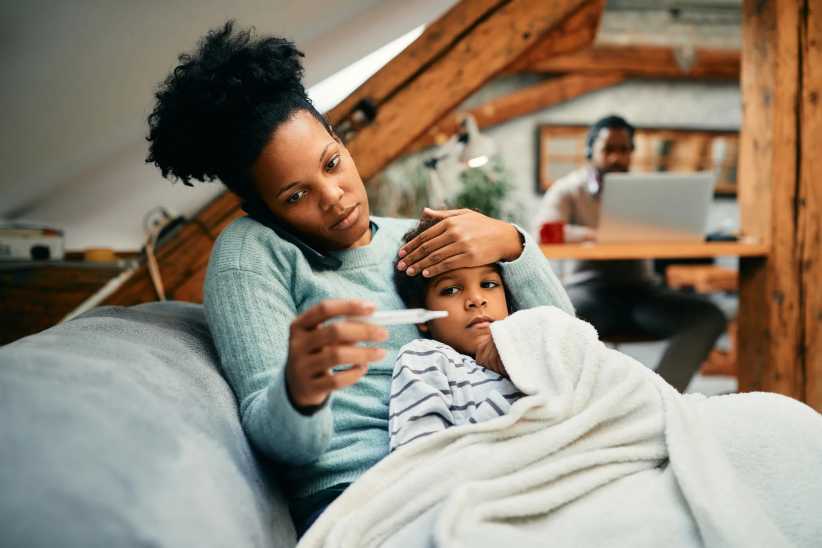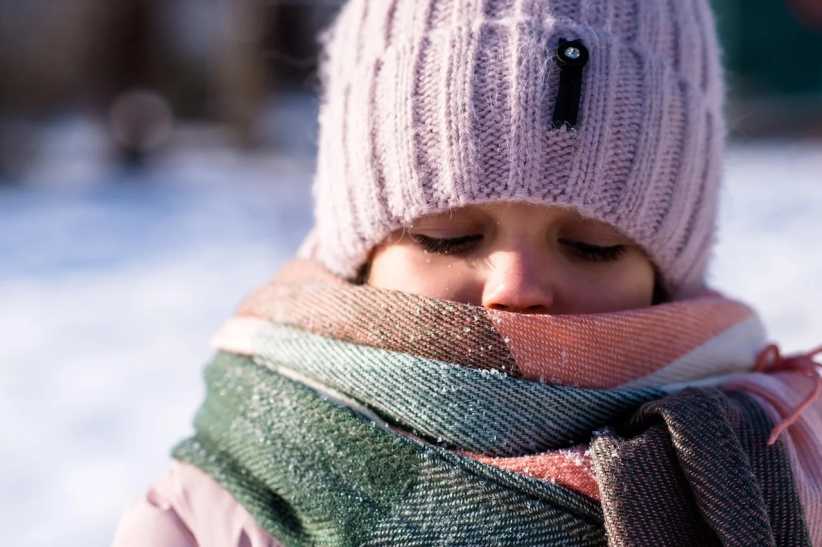
Summer Skin Safety: Identifying Sunburn, Skin Tips & More
Summertime can present a plethora of skin safety issues — read more on how to keep your little ones safe!
As summer temperatures continue to rise across the city, more New York City residents are susceptible to rashes, sunburn, and other summer skin disorders. This summer has seen record-high temperatures for the five boroughs, reaching up to 100 degrees during peak times. According to data collected by the Behavioral Risk Factor Surveillance System, nearly 30% of adults in New York State reported experiencing at least one sunburn in the past year, and over 50% of Americans don’t use sunscreen, which can lead to skin conditions such as sunburn, skin cancer, and more.
That’s why recognizing the signs of sunburn and practicing skin safety during the hotter months is imperative for New Yorkers. Ahead, Dr. Asha Patel Shah, Head of Medical Affairs NA, Skin Health & Beauty at Kenvue, and board-certified Dermatologist, answers all of your burning (no pun intended!) questions about summer skin safety and shares tips and tricks to help you beat the heat!
Psst… Check Out Moms, Are You Getting the Right Health Screenings? Find Out What You Need at Every Age
What is Sunburn?
We all have experienced harsh sun on our skin and are familiar with how uncomfortable it can make us. The dryness, the peeling of the skin, and most importantly the pain, but what exactly causes it?
“Sunburn is essentially an acute inflammatory skin reaction from damage caused by ultraviolet (UV) radiation from the sun or artificial sources like tanning beds,” says Dr. Shah. “The UV rays penetrate your skin and trigger an inflammatory cascade, leading to the classic signs we all recognize – redness, warmth, pain, and sometimes even blistering – as your body tries to manage the trauma from the acute UV exposure.”
According to the American Journal of Preventive Medicine, 28% to 53% of children were found to have a history of sunburn, while studies from Western Michigan University found that children and adults who spend a lot of time in the sun, especially during peak hours (10 a.m. to 4 p.m.), are also at higher risk.
“Children’s skin is more vulnerable than adult skin as anatomy and protective mechanisms are not fully mature, so they have less of a robust natural defense against UV rays. This means a child can get a sunburn incredibly quickly,” Shah continues.
What Are the Signs of Sunburn and How Do They Differ Across Various Skin Tones?
Identifying sunburn in its various stages is key to preventing or treating it in the early stages. Sunburn may appear differently on different skin tones, and Dr. Shah advises looking for irritated, flushed skin, tenderness, and redness to identify sunburn.
“For individuals with lighter skin tone, redness is usually very obvious, and often the first indicator. But for those with a darker skin tone, redness is nuanced and can appear as pink, purple, or even a deeper shade of the existing skin tone,” she explains. “Oftentimes, the acute stage of a sunburn is not recognized in skin of color, and the subsequent peeling (aka desquamation) stage is sometimes the only recognizable clinical sign. It is very important to remember that if blisters appear, that indicates a more severe burn and a deeper level of injury, regardless of skin tone.”
A common misconception is that individuals with darker skin cannot get sunburned, which is false. A Centers for Disease Control study found that 9% to 13% of Black men and women report at least one sunburn per year. Children are most susceptible to sunburn due to their skin barrier not being fully developed, allowing UV rays to create even more damage if exposed for too long. Sunburn can affect children as young as infants, and Dr. Shah recommends keeping an eye open for signs of dehydration, such as lower wet diaper count, dry mouth, refusal to feed, fussiness and lethargy.
“Toddlers and preschoolers might verbally complain of pain or stinging, pull away when their skin is touched, or become unusually clingy,” Dr. Shah continues. “Just one blistering sunburn in childhood can double a person’s lifetime risk of melanoma. Beyond cancer, repeated sun exposure leads to premature skin aging, or photoaging, which includes uneven skin tone, age spots, fine lines, wrinkles, and a loss of skin elasticity.”
What to Do if Your Child Gets Sunburned
If you’re child gets sunburned, it does not mean you’re a bad parent. Sunburn is a common occurrence; however, it should be treated as soon as possible. Depending on the severity, you may or may not need a doctor’s visit, but you can also treat sunburn at home.
“Immediately get their child out of the sun and into shade or indoors into a cool, darkened room,” Dr. Shah instructs. I’d also recommend cooling the skin with cool compresses or a lukewarm bath, avoiding direct skin contact with ice, which can cause further damage.”
Topicals such as aloe vera can also help cool the skin and ease redness and irritation. However, for children with eczema or sensitive skin, Dr. Shah recommends a colloidal oatmeal bath as an additional idea to soothe compromised skin. If there is blistering or bleeding, visit your nearest urgent care or hospital.
Stay Safe This Summer
“I encourage people to embrace the shade when possible and keep children out of direct sun, especially during peak hours, which is usually 10 am to 4 pm. Wearing protective clothing (i.e., long sleeves, wide-brimmed hats, pants, UV-protected sunglasses) and utilizing broad-spectrum, water-resistant sunscreen with an SPF of 30 or higher is a great all-around plan to protect responsibly,” Dr. Shah concludes. “Enjoying the outdoors is very important, but doing it in a responsible and safe manner is key.”
Psst… Check Out A Guide to NYC Pediatric Hospitals














